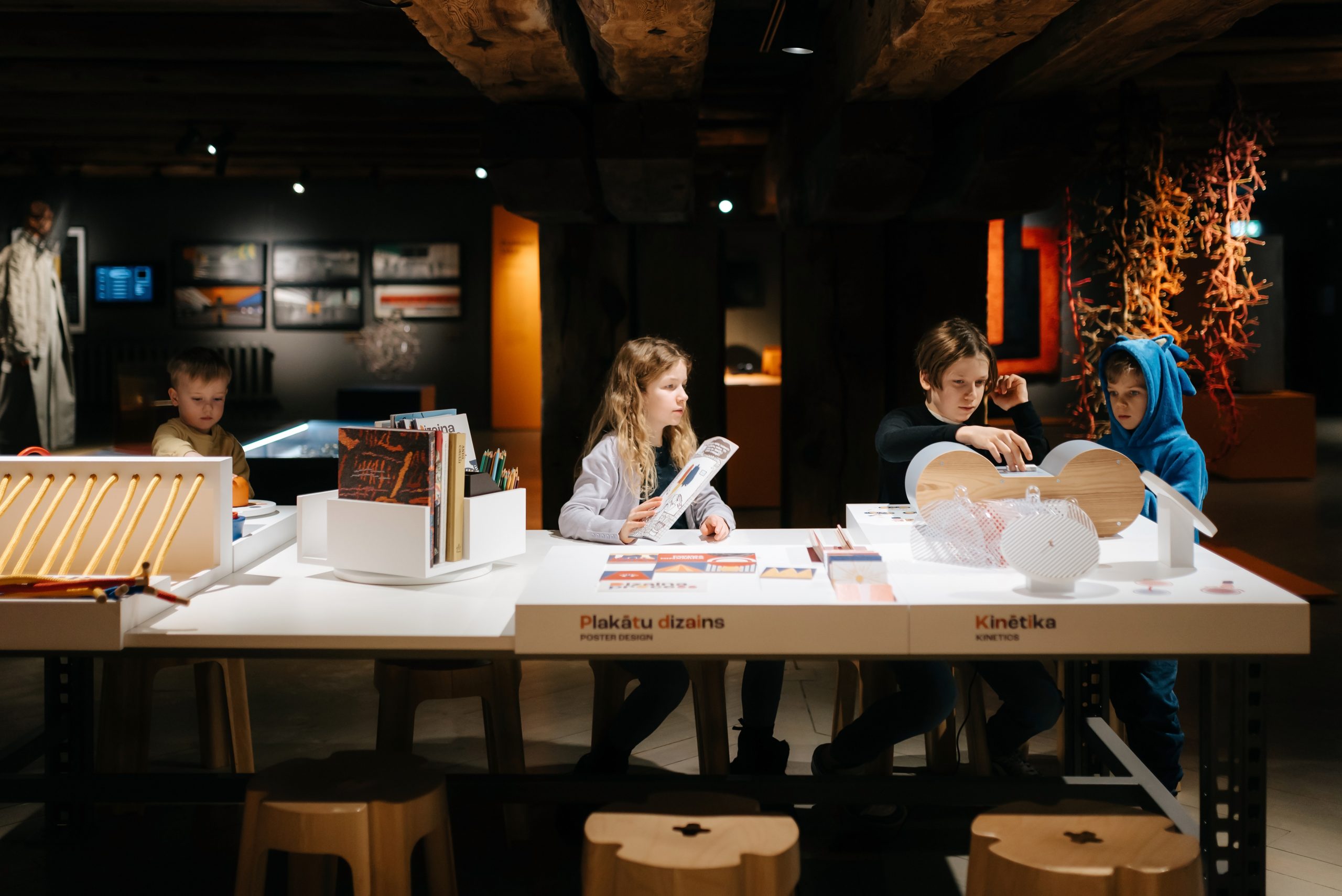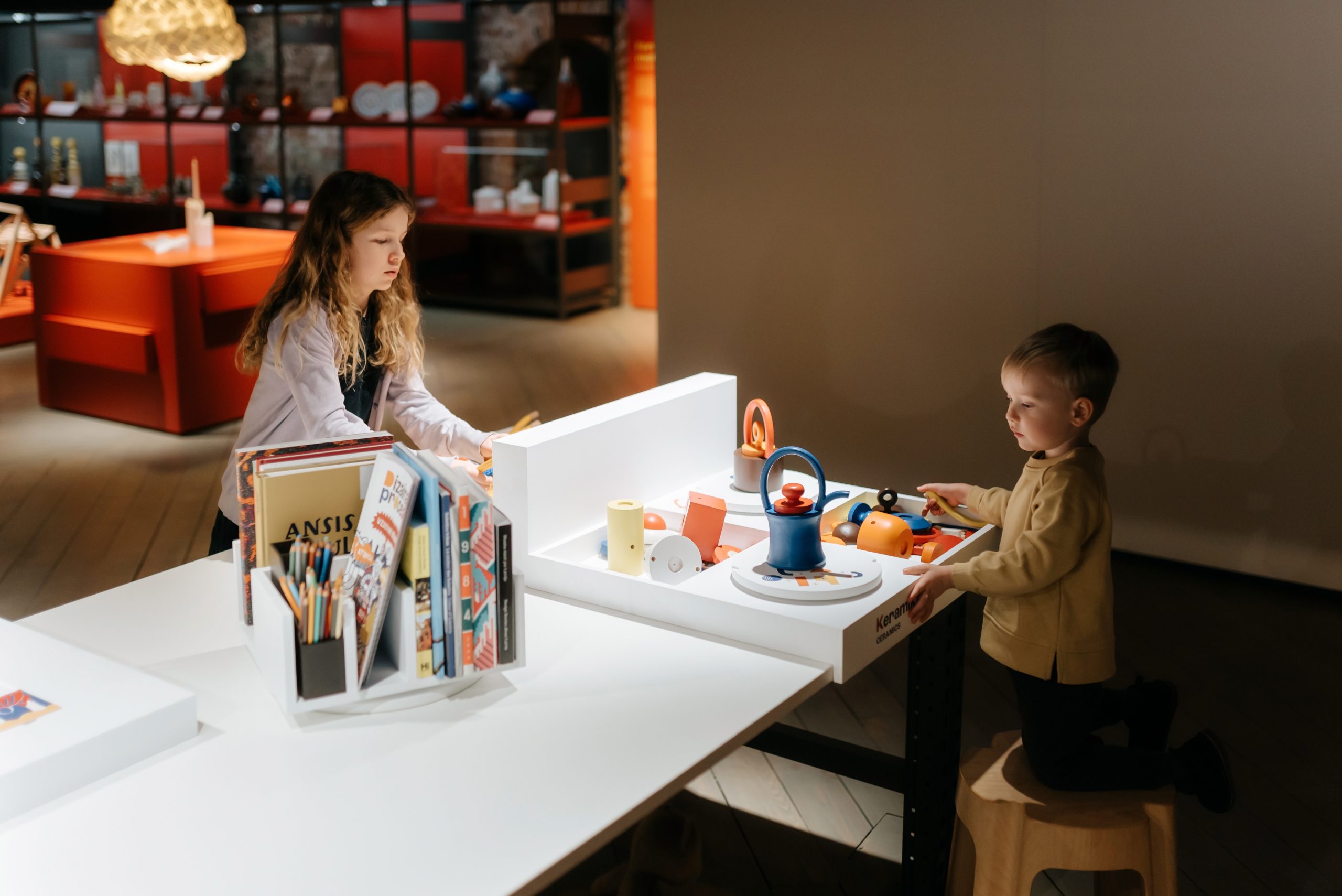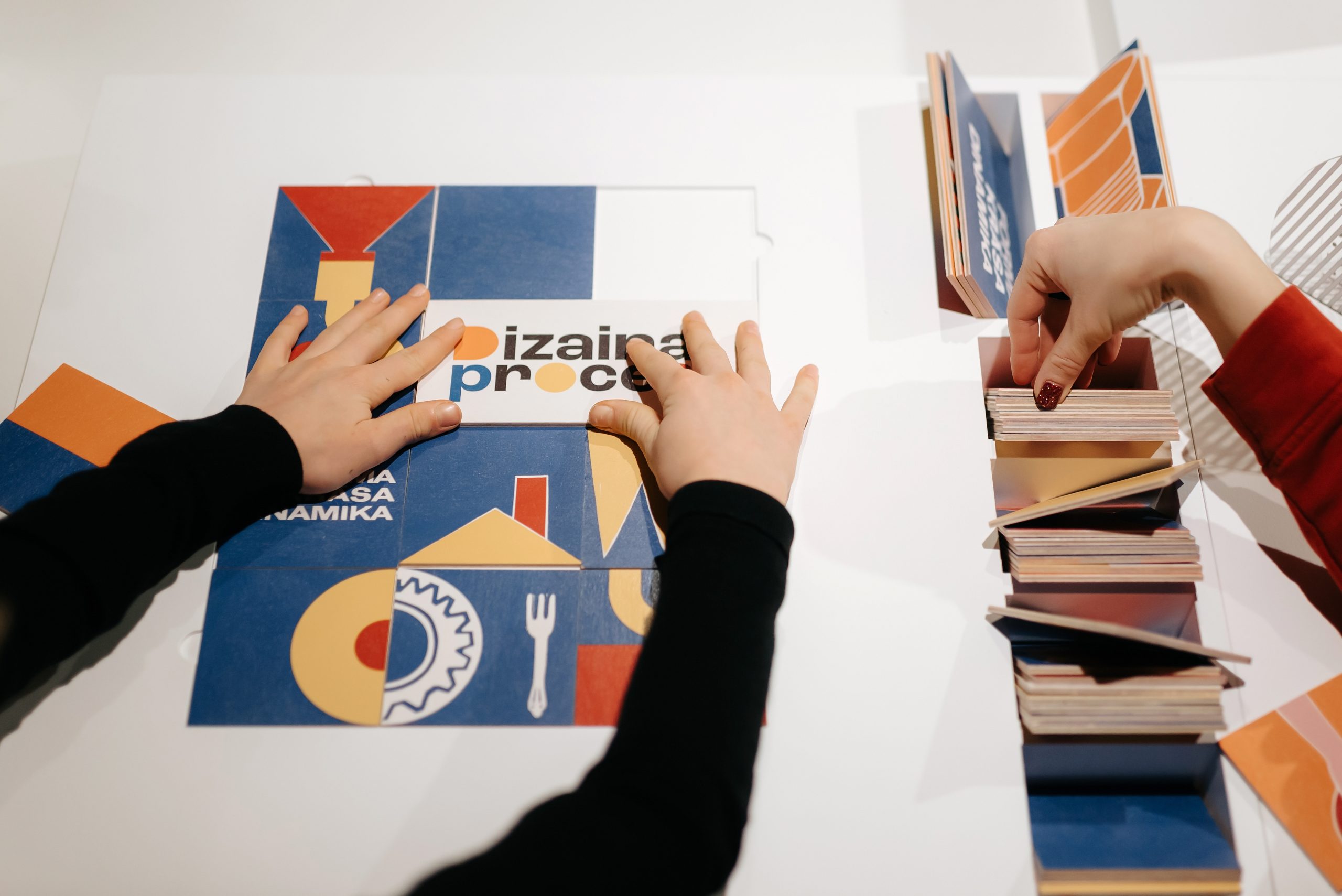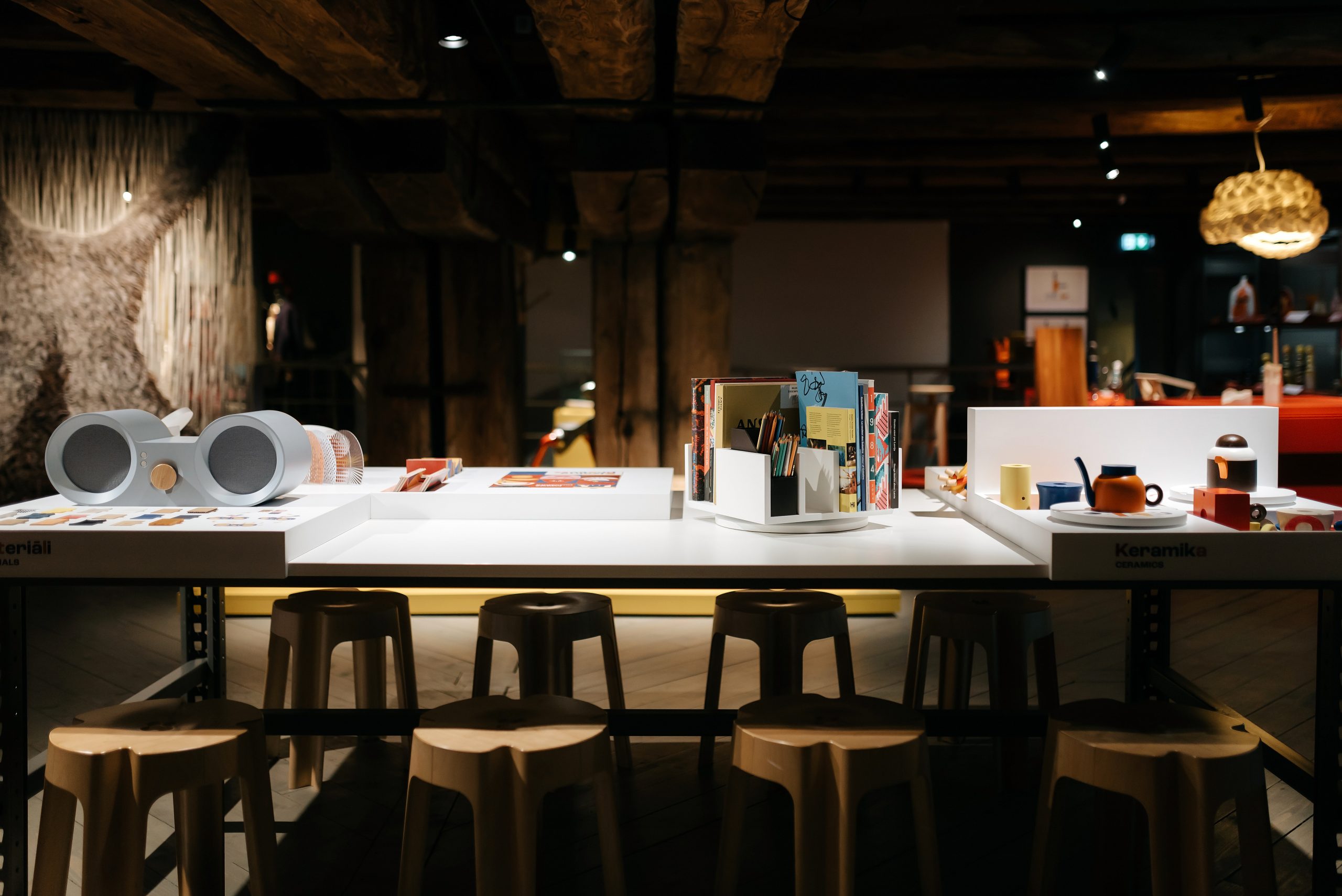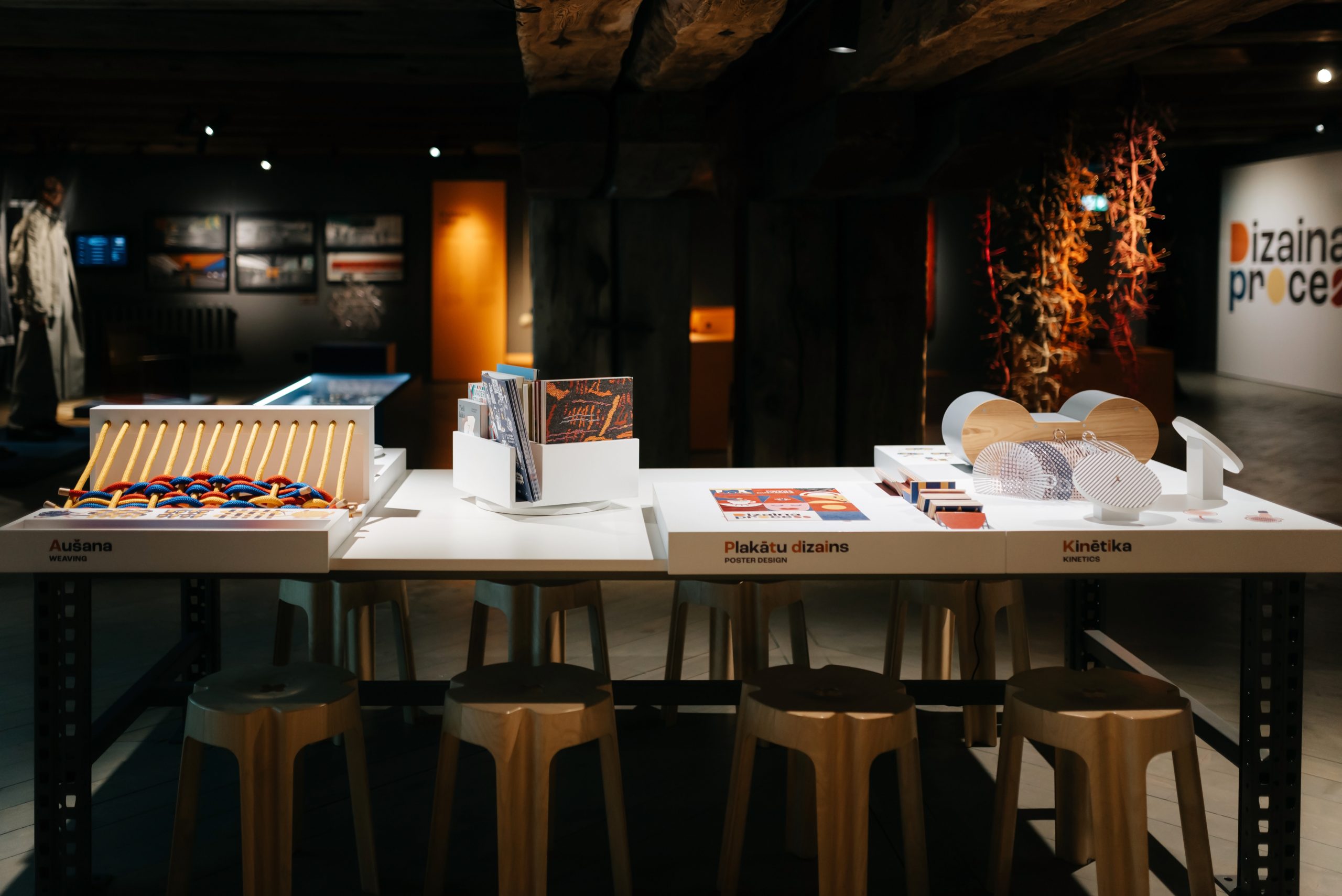Design studio for children at the Museum of Decorative Arts and Design
Brief description of the project
The Museum of Decorative Arts and Design has become an even more child-friendly and exciting place because of its new activity studio where children can explore design creatively. The design studio for children allows young museum visitors to try their hand at ceramics, kinetics, poster design, weaving, to feel the differences of various design materials and listen to stories told by the interactive speaker Babbit. The new design studio invites children to explore the topics covered in the museum in an engaging way and for families to build a closer connection with design in their everyday life.
Originality and creativity of the idea
The concept, content and design of the Design Studio for Children were created by understanding the needs, actions and environment of its potential users, as well as by trying to fulfil the mission of the DMDM – to educate the public and stimulate interest in the historical artefacts of decorative art and design in Latvia and the world.
The project team has created unique mobile task stations designed especially for the content and layout of the Design Process exposition: Weaving allows the user to try different weaves, Kinetics – to connect and move geometric patterns, Poster design – work with printed plywood cubes, Ceramics – a wooden constructor inspired by DMDM’s exhibits, and Materials (which is a first for the museum because of its novel use of the speaker Babbit in a museum environment) which tells stories about materials often used in design in an interactive and tactile way.
Definition of the problem and the relevance of the applied solutions
Short-term and long-term goals were precisely defined when work on the project began. The vision of the project was to create an unprecedented, interactive experience for families with children of preschool and primary school age. When creating the task of the project, it was clear that we must create an interpretation of the content of the exhibition in a way that is understandable and engaging for children while retaining the educational function of DMDM. The core of the project team was in agreement at the initial stage that it is essential to involve potential users in the process and create feedback between the team and the target audience – children and families. The solution corresponds to the task – it develops an understanding of design, creates a more inclusive museum environment, promotes the development of informal design education and reduces emotional and intellectual barriers to visit the museum for families.
Co-creation, stakeholder involvement and cooperation during the realisation process
The parties involved in the project are: education and accessibility specialists of the LNMM, designer and creator Lāsma Kondrāte, illustrator Kristīne Martinova, designer of the speaker Babbit – Aleksandrs Roga, audio content creator Augusts Zilberts and the testers of the Design Studio for Children. The project was created with the help of a multidisciplinary team, and this can be viewed as one of the biggest benefits because this cooperation produced the best possible results. The prototypes were tested by the target audience of Design Studio for Children – school and preschool children with their parents and two groups of primary school children. After we received feedback and observations, we made improvements to make the tasks very intuitive and easy to understand.
The project was possible thanks to financing received from the State Culture Capital Fund.
Functionality and technological solutions
Design studio for children is placed on a table in the center of the exhibition. Each task is located in a separate area – a functional wooden box, which contains the necessary materials for its completion. The boxes are made of painted plywood, are comfortable, safe and mobile, so they can be moved if necessary. Participants have a functional/ergonomic choice – to perform the tasks while standing at the table or by sitting on the design stool Bloom. This makes the activities accessible even to the smallest of visitors.
Also noteworthy is the application of the speaker Babbit (manufactured in Latvia) in the museum environment. We attached audio files to the exhibition objects using NFC (Near Field Communication) tags, which reveal special stories prepared by the DMDM educators. The stories speak about 18 materials often used in design, such as wood, clay and glass, and are supplemented with tactile materials.
Aesthetics and other experiential dimensions
The design and visual identity of the table is similar to the visual identity of the Design Process exhibition that opened last year – we retained the colors used and the overall context. The result of the collaboration between Lāsma Kondrāta, Kristīne Martinova and the museum team is concise, accessible and easy to understand. The activity table is accessible from all sides. The families are invited to work at the table as a team. Children can learn, experiment, and achieve their own result by creating, for example, a poster or a teapot. The tasks create different sensory experiences.
Maintenance and cleaning of the studio is also an important aspect, taking into account that it is used by a large number of visitors every day. The solution was designed with easy maintenance is mind – that it’s easy to understand where all the objects must be returned.
Economic significance, sustainability and circularity
Design Studio for Children makes the museum a friendlier place for both families with children and educational institutions and educates the younger generation about design, highlighting its presence in everyday life. The area proves that the museum is a useful place for leisure. We deliberately chose to cooperate with local Latvian designers and manufacturers, highlighting local design products. The materials used in the production process of the project are high-quality and sustainable, so that everything can be restored, reused, and recycled. The task boxes, for example, and other components of the activity area are made of wood. The funding provided by VKKF was utilized to achieve the most efficient and sustainable result possible. The tasks are intended to be completed on-site in the museum. This alludes to the sustainability of the product and the fact it does not require the use of additional resources.
Social relevance, inclusion, availability and accessibility
The tasks are open to interpretation and do not have a single correct solution. Almost 90% of the activities do not require literacy, thereby expanding the range of potential users. Design Studio for Children urges families to recognize that the museum is open to children. It involves and educated even the smallest visitors during a family's visit.
The Museum of Decorative Arts and Design hosts various events for families and students. The aim of this project is to encourage individual visits to the museum and to attract new visitors. Design Studio for Children is available to museum visitors at any time when the exposition Design Process on the 3rd floor is open for visitors. The admission price to the permanent exhibitions is family-friendly, and admission is free on the last Sunday of every month.
